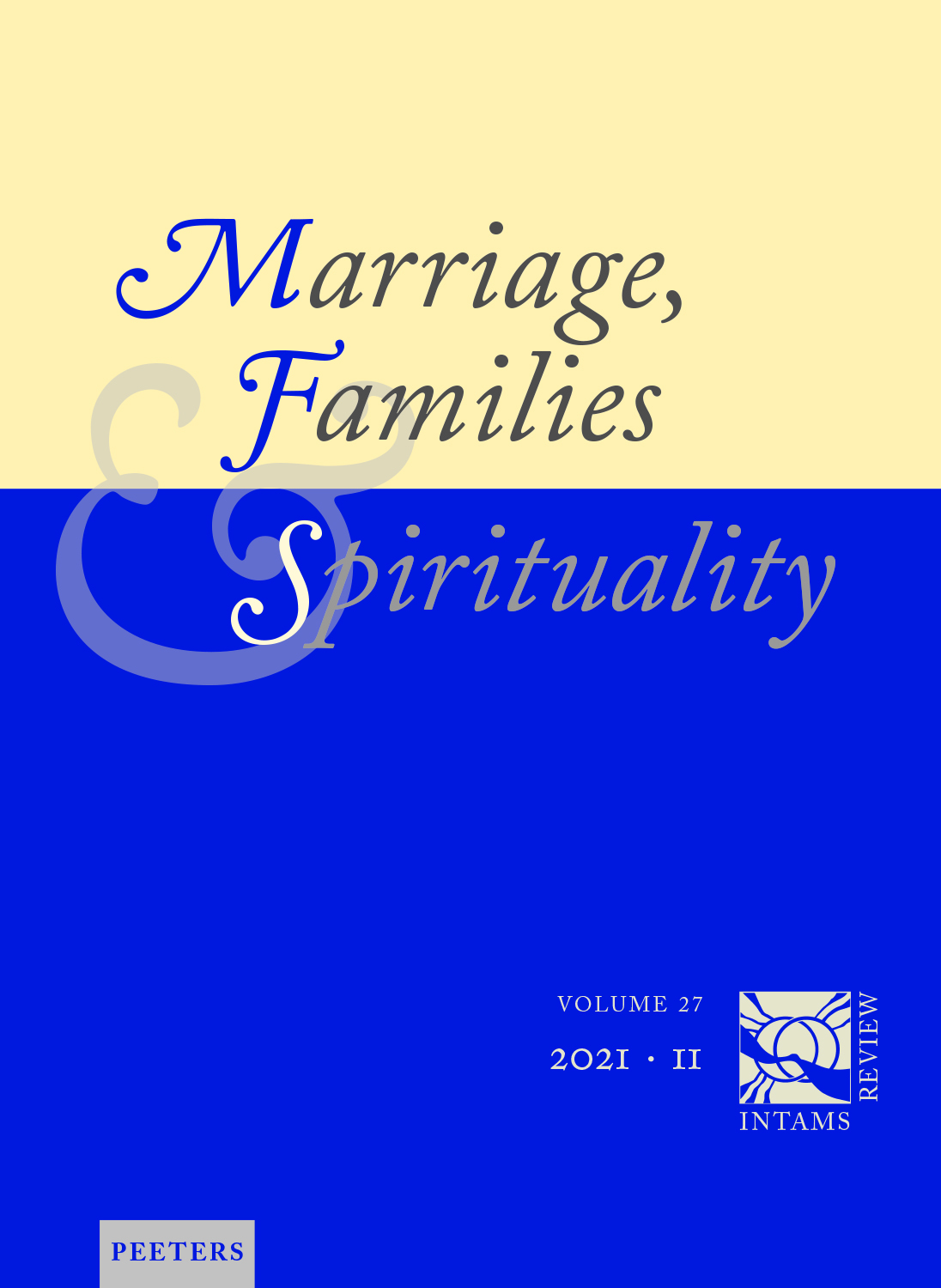 previous article in this issue previous article in this issue | next article in this issue  |

Preview first page |
Document Details : Title: From Contradiction to Paradox Subtitle: A New Perspective on Galatians 3,28 Author(s): MOSS, Yonatan Journal: Marriage, Families & Spirituality Volume: 26 Issue: 1 Date: 2020 Pages: 26-40 DOI: 10.2143/INT.26.1.3288947 Abstract : The article proposes a new way of interpreting the apparent contradiction between Paul’s assertion that there is no male or female in Christ in Galatians 3,28 and his statements in other letters that affirm a difference in the way that men and women participate in the Christian community. The author first describes the hermeneutical problem, situating the Galatians text in the context of the letter and showing how other texts, like 1 Cor 7 and 11 and Rom 1, can be seen to be at odds with it. He then describes three contemporary strategies that have been used for dealing with this conflict. The first is adopted by scholars who see in the opposition a development either in Paul’s own thinking or in Paul’s way of integrating an earlier Christian equality. The second strategy is what he calls a synchronic approach. It seeks to find an explanatory framework in which the two types of statements are in fact not contradictory, despite their apparent nature. The third strategy is simply to be at home with the inconsistency, admitting that it represents an unresolved element in the living of the Gospel. The author then gives an account of traditional interpretations, which on principle cannot allow for either change or inconsistency since all Pauline texts are the inerrant Word of God. These interpretations, he shows, deal with the texts as describing different circumstances within the Church, refer to a difference in spiritual and material ways of relating, and a reflect a tension between the life of grace and current circumstances. This kind of hermeneutic approach is taken by Lumen gentium. Moss then moves to his own proposal, which seeks to take seriously the contradiction without explaining it away and at the same time to assert a consistency in Paul’s thinking. He argues that the two kinds of passages are not contradiction but paradox. In a paradox, both sets of opposing statements are true and are meant to be held in tension. This, he says, is a common feature of Paul’s teaching. Paul is asserting two consequences for male and female relationships within the Church, one in which there is no difference and one in which there is difference; both are equally true and essential for Church living. He concludes by arguing for the probability Paul himself had a hand in the editing of his letters and so would not have left any unintentional contradictions. The resulting paradox, he says, reveals that Paul is articulating both a theology of marriage and a psychology of marriage as a subspecies of community. |
|


